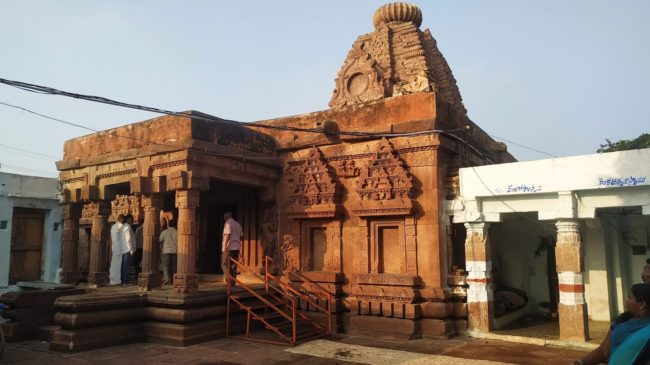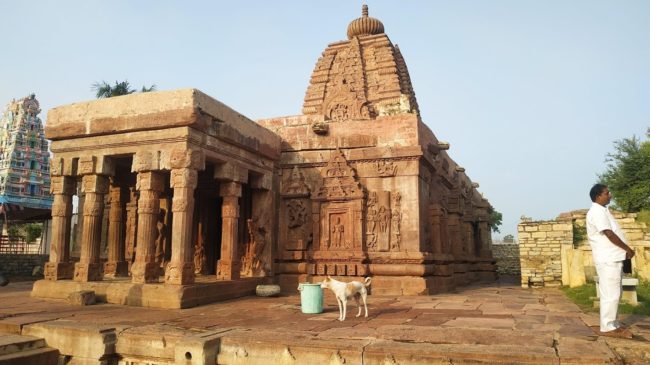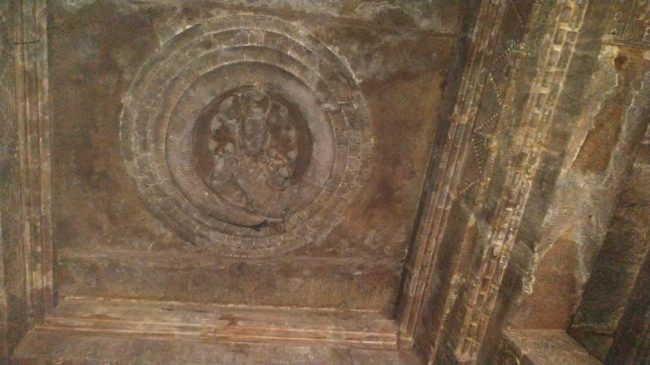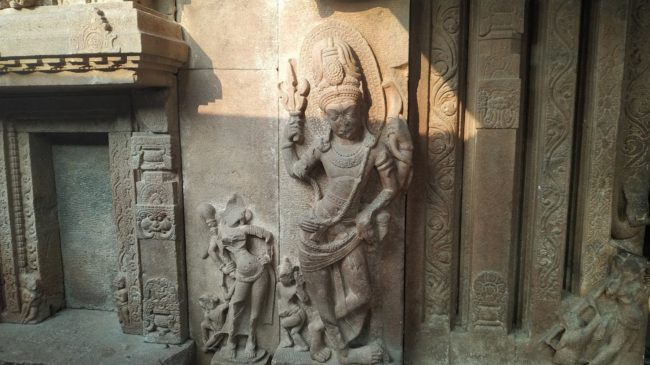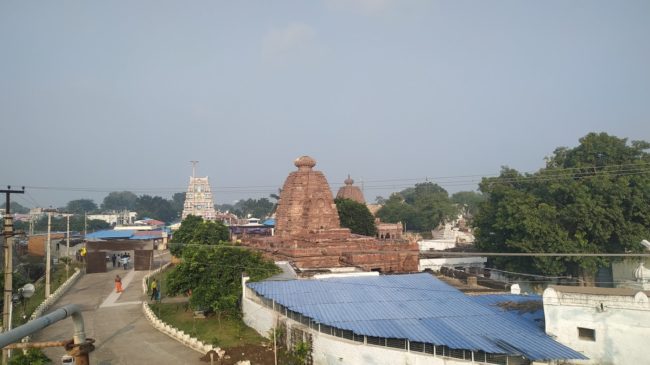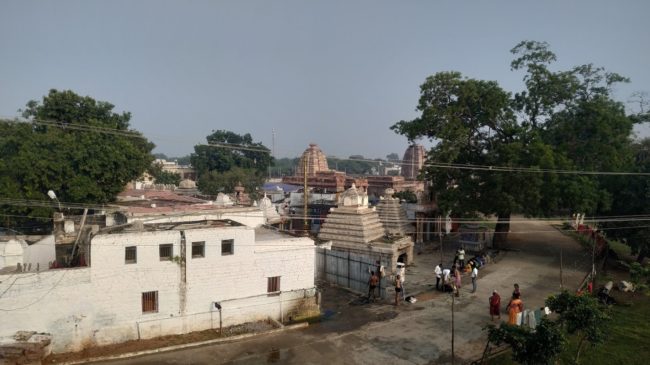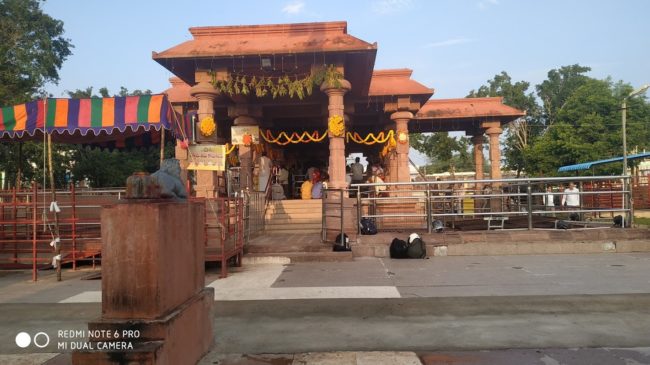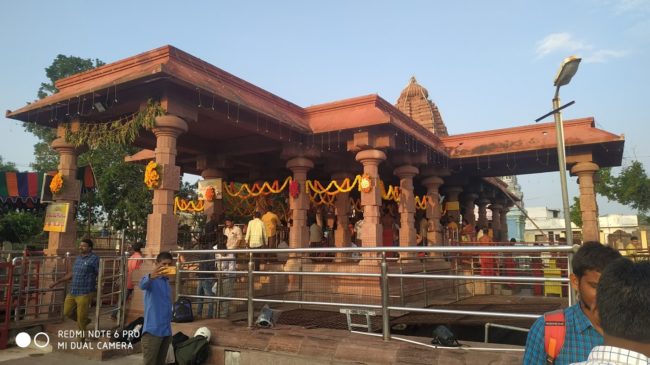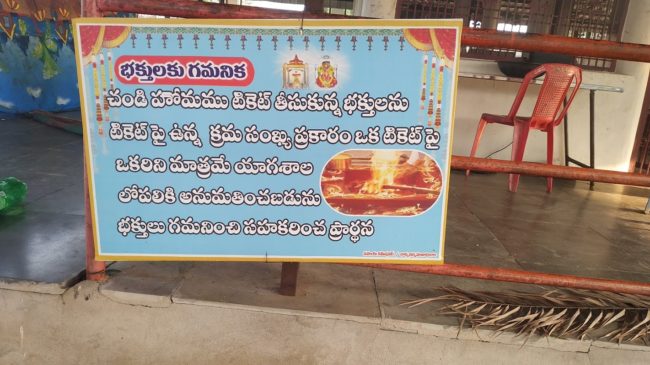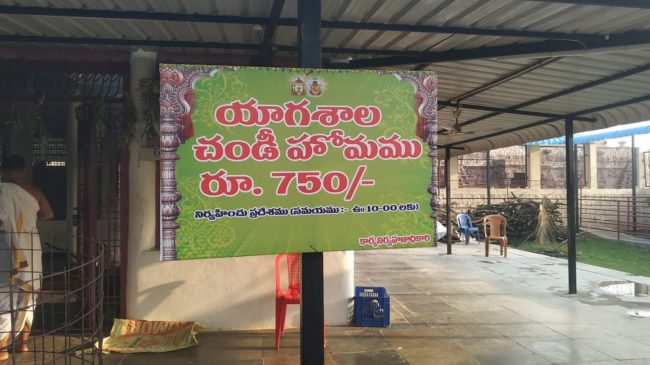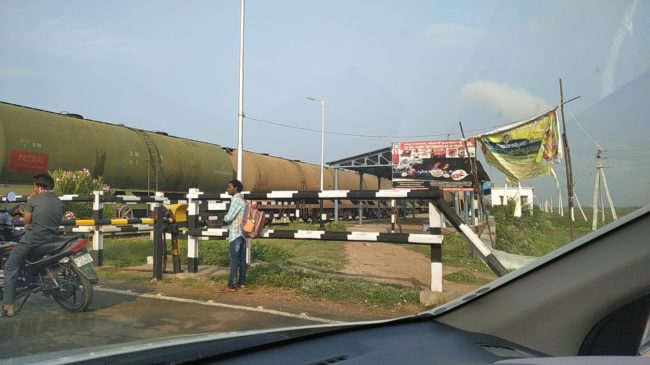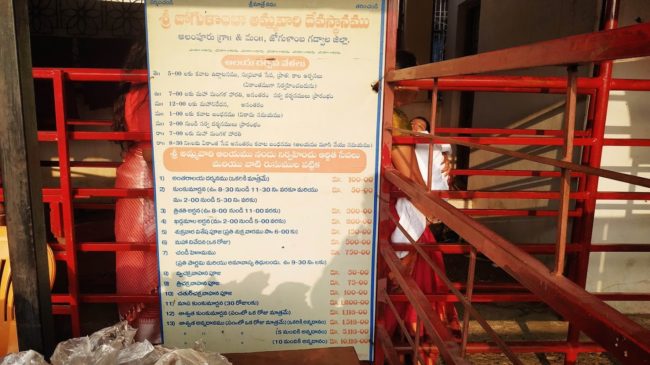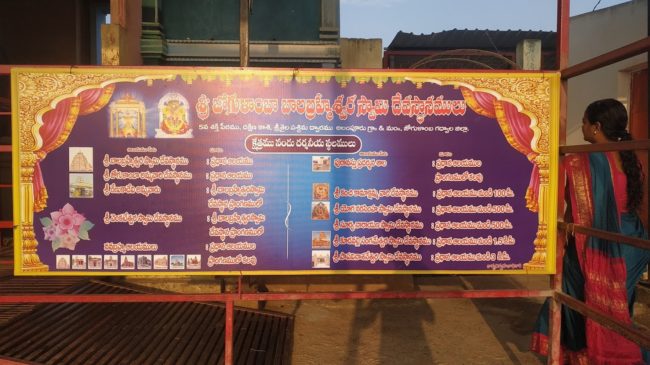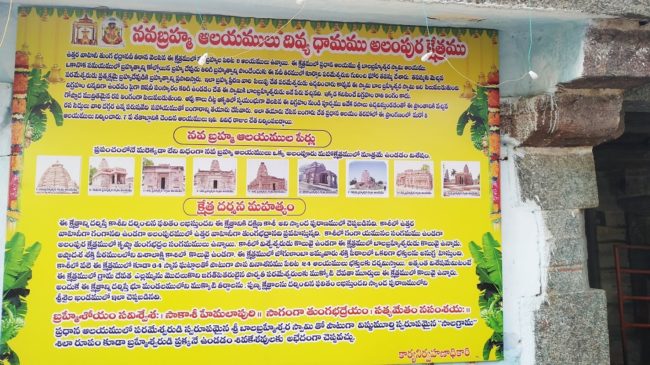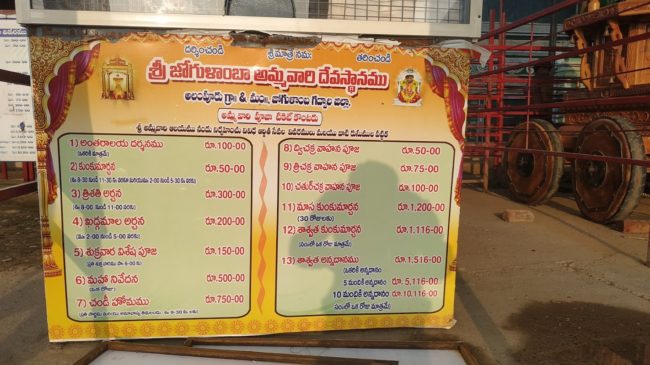Alampur is a historical town located in the Jogulamba Gadwal district of Telangana. It is named as a city of temples and famed for its sculptures. Both the sacred rivers Tungabhadra and Krishna meet in this town. The town is situated on the left bank of the Tungabhadra river and the temple is surrounded by Nallamala hills. Alampur is referred to as Dakshina Kashi and is considered as the Western gateway of Srisailam (the revered Jyotirlinga Shivastalam). The Alampur temple’s sacredness is mentioned in the Skanda Purana. The town was under the rule many kings such as Badami Chalukyas, Shatavahana Ishvakus, Kalyani Chalukyas, Rashtrakutas and Qutb Shahis of Golconda. In an inscription, it was mentioned that the temple was constructed by Vinayaditya Chalukya in 704 AD. The temple signifies the Badami Chalukyan architecture.
The principal deities at the Jogulamba temple are Balabrahmeshwara and Jogulamba. Among the 18 shakti peetams in the country, goddess Jogulamba is considered the 5th shakti peeta. The goddess Jogulamba is seen in the naked avatar and seated on the corpse with lizard, scorpion and frog on the head. A fierce goddess with her tongue stretched outside that grants siddhi in yoga. Got the name Jogulamba from the words Yogula Amma which translates to the Mother of Yogis. You will find the idols of Saptamatrikas, Vighneswara and Veenapani Veerabhadra in this temple. Original Chandi Mundi idols were left in Bala Brahmeswara Swamy temple (Lord Siva) and new idols are created and placed in Jogulamba Devi temple.
According to the popular belief, in the 6th century, there was a saint called Rasa Siddha who is close to the Chalukya king Pulakesi II had the power of converting base metal into gold. He played an instrumental role in constructing all the nine temples called Nava Brahmas dedicated to –
- Padma Brahma Temple
- Swarga Brahma Temple
- Arka Brahma Temple
- Vishva Brahma Temple
- Garuda Brahma Temple
- Bala Brahma Temple
- Taraka Brahma Temple
- Vira Brahma Temple
- Kumara Brahma Temple
The nine names put forth by the Rasa Siddha are actually the names of medicinal herbs. The tantric work, Siddha Rasarnavam states that when upasana is performed, mercury is oozed from the Linga of Bala Brahma, Navel of Ganapathi, Thighs of Subramanya and Mouth of Mother Jogulamba, which further with the help of medicinal herbs can be converted into gold.
Out of the nine brahma temples, Bala Brahma is the only active temple and is the biggest one. Jogulamba is located near to the nava brahma temples and 2km away from this site is the Sangameshwara temple. Under The Ancient Monuments and Archaeological Sites and Remains Act, the Archaeological Survey of India, listed out the Alampur temples as an architectural and archaeological treasure on the official “List of Monuments”. In the 1970s during the time of Srisailam dam construction, the temple was at risk of submerging under the water, therefore ASI has rebuilt the temple brick by brick at its current location.
Alampur Jogulamba temple is open on all days of the week and the timings are 7:00 AM to 1:00 PM and 2:00 PM to 8:30 PM. The best time to visit this temple is during the months of September to March. Especially during the Maha Shivratri festival, you will find more number of devotees and tourists. From Hyderabad, Sri Jogulamba Bala Bramareshwara Swamy Devasthanam Alampur is located at a distance of 222 km and takes nearly 4 hours to reach. Alampur Railway station is located on Hyderabad to Kurnool line and is 8km to the temple. The nearest city to the temple is Kurnool which is 27 km from the temple.
Alampur Jogulamba Temple Images:
Alampur Jogulamba Temple Timings:
7:00 AM to 1:00 PM and 2:00 PM to 8:30 PM.
Alampur Jogulamba Temple Kumkumarchana Timings:
8:30 AM to 11:30 AM and 2:00 PM to 5:30 PM
Alampur Jogulamba Temple Pooja Timings:
7:00 AM to 1:00 PM and 2:00 PM to 8:30 PM.

